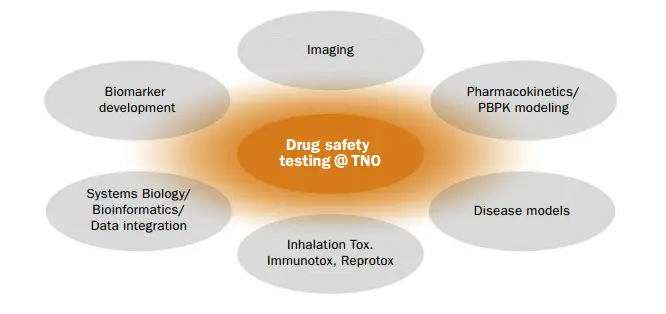Preclinical Drug Safety Ealuation and Drug Safety Testing

The preclinical services that Medicilon offers focus on preclinical pharmacokinetic and drug safety assessment (evaluation) for foreign and domestic clients.

Preclinical Drug Safety Testing : In vitro and in vivo testing to determine if the drug is safe enough for human testing.
OUR SERVICES:
-
❖Single dose toxicity test (rodent and non-rodent)
-
❖Repeated dose toxicity study (rodent and non-rodent)
-
❖Safety pharmacology test: telemetry and non-telemetry to monitor the electrocardiogram and respiration of dogs and monkeys, rats FOB
-
❖Genotoxicity tests
-
❖Immunogenicity test
-
❖Partial toxicity test
Preclinical Safety Testing Requirements
-
Selection of the relevant animal species;
-
Age;
-
Physiological state;
-
Dose, route of administration, and treatment regimen; and Stability of the test material under the conditions of use.
Platform
-
The technical service platform of evaluation of biotech drug safety on non-human primate
-
The technical service platform of experiment on non-human primate
-
The technical service platform of drug discovery and screening based on protein crystallography
-
The technical service platform of evaluation of isotope labeling drug metabolism
The Projects
More than 30 packages of non-clinical drug safety evaluation and about 800 single toxicity studies have been completed since 2012. The tested articles include small molecular drugs, biotech drugs, vaccine (monovalent and multivalent ) and traditional Chinese medicine and natural drugs.
New Drug Application
Since 2012, 15 non-clinical safety evaluation packages and more than 60 single toxicity study data generated from MPR were used by the clients in IND application to CFDA, US FDA and Australia TGA separately.
New medicines or chemicals which may affect the health of humans are required by law to be tested on animals. These safety tests, which provide crucial information for planning human trials, represent a very small proportion of the development process for a new medicine. While animal tests cannot predict all of the reactions a human may have to a given substance, broader questions about effects on the heart, liver, lungs or skin are answered through animal studies so that its relative toxicity is known. Acute toxicity tests, where a single, high dose of a substance is given to animals, are performed early on in development. The results are used to design studies which examine the compound in more detail.
Safety testing begins early in the exploratory development of a potential drug, with acute toxicity tests. These are usually carried out on a rodent species, and a non-rodent mammalian species, as this gives the minimum data necessary for making comparisons between effects on different species.
Drug safety testing is a complicated process that involves many different steps to ensure the highest level of safety.
PRECLINICAL RESEARCH
The first step in developing and testing a new drug is preclinical research. Initially, scientists consult the vast amount of published information and databases to obtain as much background information as possible. If necessary, they perform studies to determine which germ, virus, chemical, or other factor causes a disease. Then the mechanisms of the disease are studied and new drugs are developed and evaluated for effectiveness and side effects using cell culture and whole animal models. Even though scientists minimize the number of animals used by testing drugs in cell culture whenever possible, it is still important to test drugs in animals.
PRECLINICAL SAFETY ASSESSMENT TESTING
Once a drug is shown to be effective in animals and to have a low incidence of side effects, it will be proceeded to safety assessment testing. These tests are conducted to evaluate drug safety in two different animal species, with animals receiving high doses of the new drug for 30 or 90 days. Animals are carefully monitored for side effects. After the study period, pathologists examine their organs for signs of drug toxicity. This drug safety testing in animals is carried out under guidelines mandated by law through the FDA. It is the last safety testing performed before the drug is given to people for clinical testing.
